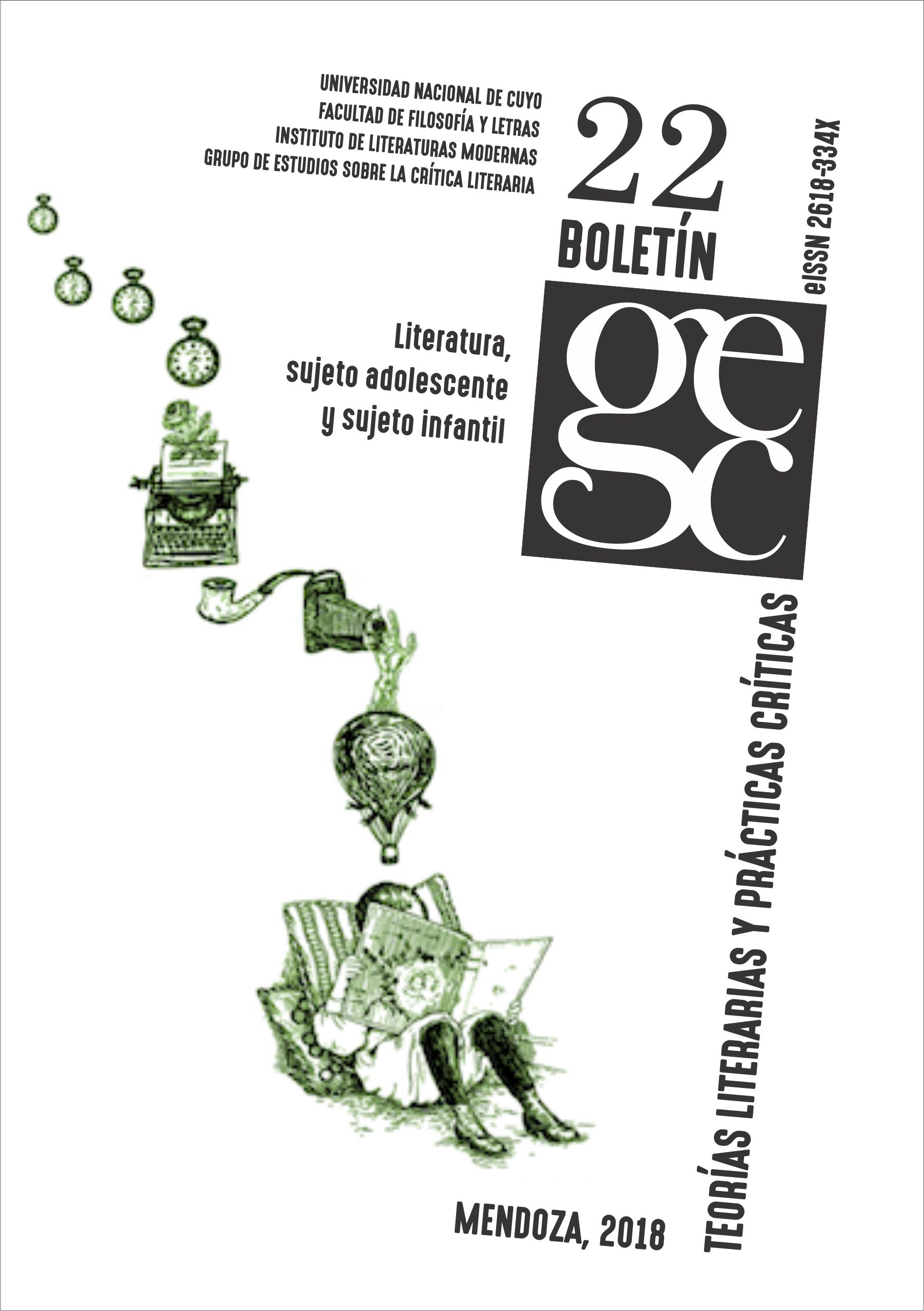All the better to read you: new perspectives on the figure of the Big Bad Wolf
Keywords:
fairy tales, children's literature, Big Bad Wolf, Little Red Riding Hood, intertextualityAbstract
One of the most famous fairy tales is "Little Red Riding Hood", a story created by Charles Perrault and later recreated by the Grimm brothers. The story refers to the dangerous attraction from the external world and it presents an omnipresent character in children's literature: the big bad wolf. This figure symbolizes all the asocial and primitive forces of human beings. The following paper analyzes the symbolic construction of this character and dialogue that engage with Perrault’s classic five works of contemporary children's literature: "The Big Bad Wolf and the Brave Hunter" by Ana María Machado, "The Wolves in the Walls" by Neil Gaiman, "Little Red Riding Hood and the Wolf" by Roald Dahl, Red Wolf and fierce littlehood by Elsa Bornemann and "I, the Wolf and the chocolate chip cookie" by Delphine Perret. Throughout these stories, the resignification of the fearsome big bad wolf is examinated by means of different humorous mechanisms.
References
Textos literarios
Bornemann, Elsa Isabel (2011). Lobo Rojo y Caperucita Feroz. Buenos Aires: Alfaguara.
Dahl, Roald (2013). "Caperucita Roja y el lobo". Cuentos en verso para niños perversos. Buenos Aires: Alfaguara. 47-51.
Gaiman, Neil (2003). Los lobos dentro de las paredes. Río de Janeiro: Rocco.
Machado, Ana María (2012). "El lobo feroz y el valiente cazador". Algunos miedos. Buenos Aires: Aique. 46-58.
Gotlibowski, Leicia. (2006). La Caperucita Roja. Texto original de Perrault. Buenos Aires: Ediciones del Eclipse.
Perret, Delphine (2006). Yo, el lobo y las galletas (de chocolate). Madrid: Kókinos.
Estudios
Bergson, Henri (1985). La risa. Madrid: Plaza y Janés.
Bettelheim, Bruno (1977). Psicoanálisis de los cuentos de hadas. Madrid: Crítica.
Juri, Silvina (2010) "Sobre los libros de juego intertextual con los cuentos populares". Antonio Mendoza Fillola y Celia Romea (coords.) El lector ante la obra hipertextual. Barcelona: Horsori. 43-54.
Llort, Sergi (2018). "Los miedos infantiles". Psicodiagnosis.es, 16 sept. https://psicodiagnosis.es/areageneral/ciclo-evolutivo/los-miedos-infantiles/index.php
"Los disfraces estimulan la imaginación". La Gaceta, 7 agos. 2008. Disponible en: https://www.lagaceta.com.ar/nota/284472/hogar/disfraces-estimulan-imaginacion.html
Pescetti, Luis María (2014). "Apuntes sobre el humor, los niños y lo infantil". Luispescetti.com, 18 jun. http://www.luispescetti.com/apuntes-sobre-el-humor-los-ninos-y-lo-infantil/
Sione, Sandra Carina (2012). "La narrativa de Ricardo Mariño. Una lectura desde la metaficción". IV Jornadas de Poéticas de la Literatura Argentina para Niños. La Plata: Universidad Nacional de La Plata. 249-253. Disponible en: http://www.memoria.fahce.unlp.edu.ar/trab_eventos/ev.1616/ev.1616.pdf
Downloads
Published
How to Cite
Issue
Section
License
Aquellos autores/as que tengan publicaciones en esta revista, aceptan los términos siguientes:
- Los autores/as conservarán sus derechos de autor y garantizarán a la revista el derecho de primera publicación de su obra, el cual estará simultáneamente sujeto a la Licencia de reconocimiento de Creative Commons que permite a terceros compartir la obra siempre que no se use para fines comerciales, siempre que se indique su autor y su primera publicación en esta revista, y siempre que se mencionen la existencia y las especificaciones de esta licencia de uso.
- Los autores/as podrán adoptar otros acuerdos de licencia no exclusiva de distribución de la versión de la obra publicada (p. ej.: depositarla en un archivo telemático institucional o publicarla en un volumen monográfico) siempre que se indique la publicación inicial en esta revista y se cumplan las otras condiciones mencionadas arriba.
- Se permite y recomienda a los autores/as difundir su obra a través de Internet (p. ej.: en archivos telemáticos institucionales o en su página web) antes y durante el proceso de envío, lo cual puede producir intercambios interesantes y aumentar las citas de la obra publicada. (Véase El efecto del acceso abierto).









